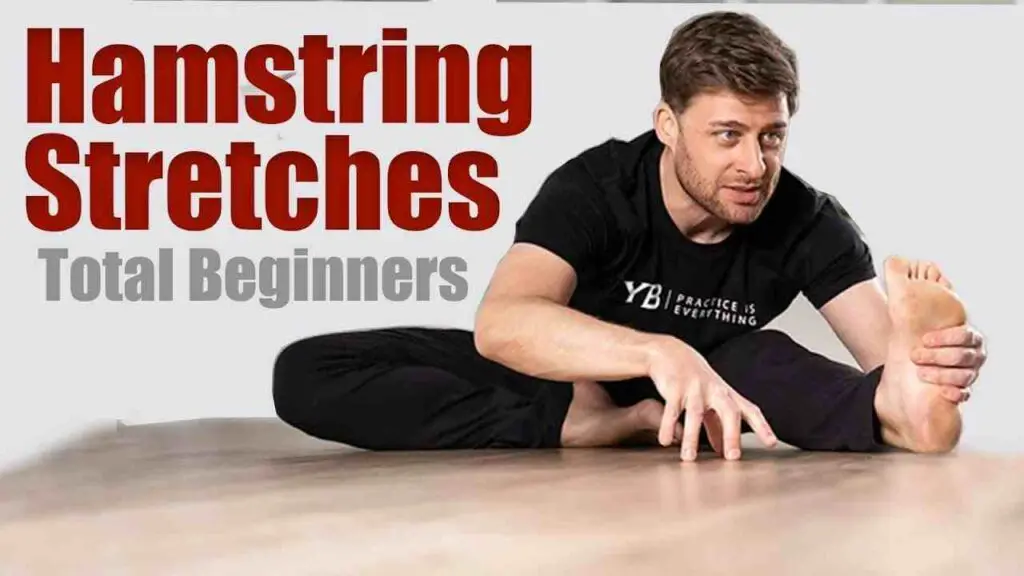Introduction
Deadlifts are one of the best exercises for building stronger and more powerful glutes. They are a compound exercise, meaning that they work multiple muscle groups at the same time, including the glutes, hamstrings, and core. If you are looking for a way to improve your glute strength and size, deadlifts should be a staple in your workout routine.
SHOP FOR THE BARBELL WEIGHTS ON AMAZON
In this article, we’ll delve into the world of deadlift for glutes, uncovering the benefits, proper form, and variations that will help you get the most out of this compound exercise.
What Is A Deadlift?
A deadlift is a fundamental strength training exercise that involves lifting a weighted barbell or other weighted objects from the ground to a standing position. It’s characterized by a simple yet powerful motion where you bend at the hips and knees to lower yourself to the weight on the ground and then lift it back up by straightening your hips and knees.
The deadlift primarily targets the muscles in your lower back, glutes, hamstrings, and core, making it an excellent exercise for building overall strength and functional fitness. There are various deadlift variations, each with its unique benefits, but they all share the fundamental lifting motion from the ground.
Understanding the Importance of Glutes
Your glutes, or gluteal muscles, play a vital role in your daily life and overall physical health. They consist of three muscles: the gluteus maximus, gluteus medius, and gluteus minimus. Here’s why understanding their importance is crucial:
- Everyday Movements: Your glutes are involved in virtually every lower-body movement you make, from standing up and walking to climbing stairs and squatting. They provide stability, balance, and power to perform these activities efficiently.
- Posture Support: Strong glutes help maintain proper posture. They work in tandem with your core muscles to stabilize your pelvis and spine, preventing issues like lower back pain and poor posture.
- Athletic Performance: Whether you’re an athlete or a fitness enthusiast, powerful glutes are essential for explosive movements, such as running, jumping, and lifting. They can enhance your performance in various sports and workouts.
- Injury Prevention: Weak glutes can lead to a range of problems, including knee pain, hip issues, and lower back injuries. Strengthening your glutes can reduce the risk of these injuries and enhance your overall musculoskeletal health.
In summary, strong and well-developed glutes are not only aesthetically pleasing but also crucial for your overall health, mobility, and athletic performance.
The Anatomy Of Glutes
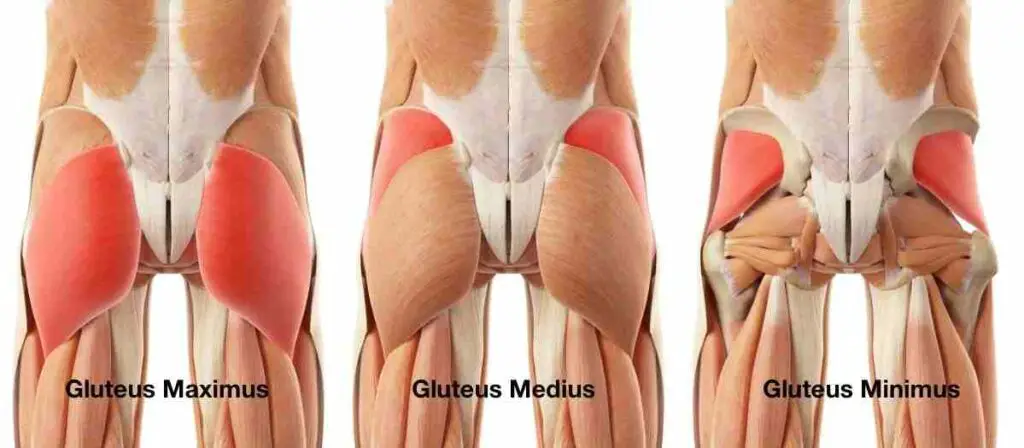
The glutes, short for gluteal muscles, are a group of three major muscles located in the buttocks area. These muscles are:
- Gluteus Maximus: This is the largest and most prominent of the gluteal muscles. It forms the bulk of your buttocks and is responsible for several important functions, including hip extension, outward rotation of the thigh, and overall stability of the pelvis and lower back. A strong gluteus maximus contributes to a well-rounded and firm appearance of the buttocks.
- Gluteus Medius: Situated beneath the gluteus maximus, the gluteus medius plays a crucial role in hip abduction and rotation. It helps stabilize your pelvis during activities like walking, running, and standing on one leg. Strong gluteus medius muscles are essential for balance and preventing hip and knee injuries.
- Gluteus Minimus: The smallest of the three gluteal muscles, the gluteus minimus assists the gluteus medius in hip abduction and rotation. It also helps maintain pelvic stability and aids in maintaining an upright posture.
SHOP FOR THE ADJUSTABLE DUMBBELL SET ON AMAZON
Understanding the anatomy of the glutes is vital when performing a deadlift for glutes. Different variations may target specific portions of the gluteal muscles to varying degrees. For instance, exercises like the Romanian deadlift primarily engage the gluteus maximus, while the single-leg deadlift may involve the gluteus medius and minimus more prominently due to the balance and stabilization required.
Deadlift for Glutes
Here, we’ll discuss 8 deadlift variations that are particularly effective for targeting your glutes. Incorporating these variations into your workout routine can help you sculpt and strengthen those glutes you’ve always wanted.
1. Deficit Deadlift
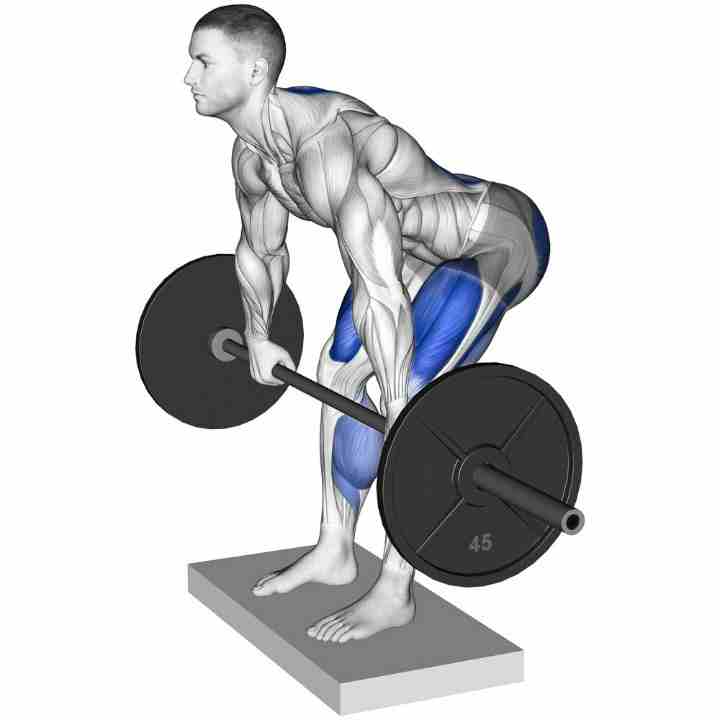
- Deficit deadlifts involve lifting from a lower platform, increasing the range of motion for your glutes.
- How to Perform: Stand on a raised surface with a barbell on the ground. Bend at the hips and knees, grip the bar, and lift while keeping your back straight.
- Tips: Maintain a neutral spine, engage your core, and start with a modest deficit height to avoid overstretching.
2. Tempo Deadlift

- Tempo deadlifts emphasize controlled movement, enhancing muscle engagement throughout the lift.
- How to Perform: Perform a standard deadlift but add a tempo count (e.g., 3 seconds up, 3 seconds down) during both the lifting and lowering phases.
- Tips: Focus on maintaining proper form, breathing rhythmically, and gradually increasing the tempo duration as you progress.
3. Sumo Deadlift
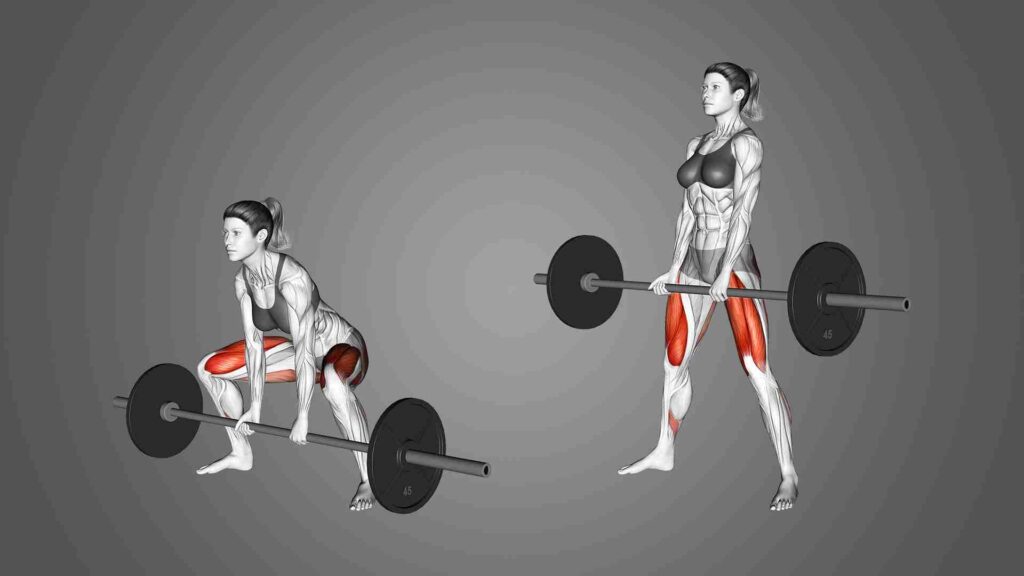
- Sumo deadlifts involve a wide stance, targeting the inner thighs and glutes.
- How to Perform: Stand with your feet wider than shoulder-width apart, grip the barbell between your legs, and lift while maintaining a vertical torso.
- Tips: Keep your knees tracking over your toes, push through your heels, and maintain a straight back throughout the lift.
4. Single Leg Deadlift
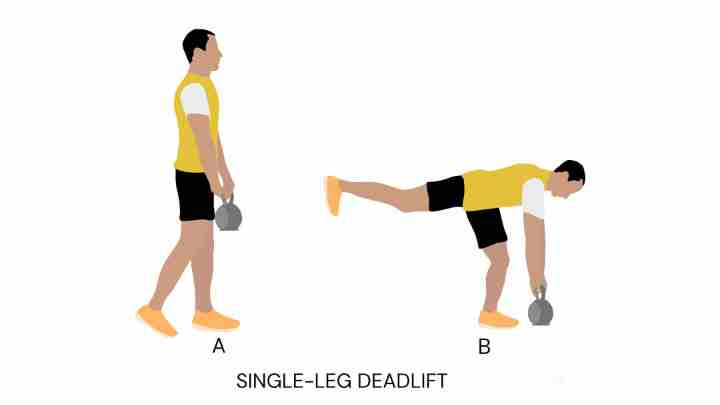
- Single-leg deadlifts improve balance and target each glute individually.
- How to Perform: Stand on one leg, hold a dumbbell in one hand, and hinge at the hip to lower the weight toward the ground while extending your free leg backward.
- Tips: Keep your back straight, maintain a slight bend in the standing knee, and focus on balance and stability.
5. Romanian Deadlift
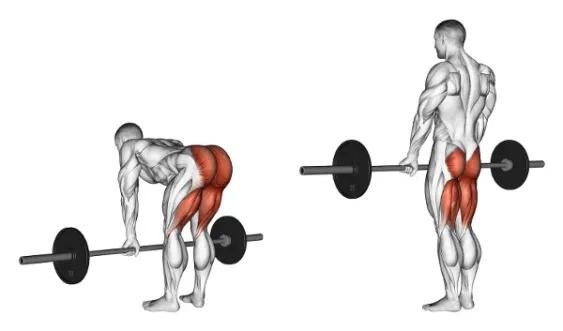
- Romanian deadlifts emphasize the posterior chain, including the glutes and hamstrings.
- How to Perform: Hold a barbell or dumbbell in front of your thighs, hinge at the hips while maintaining a slight knee bend, and lower the weights along your legs.
- Tips: Keep the weights close to your body, maintain a neutral spine, and avoid rounding your back.
6. Landmine Deadlift
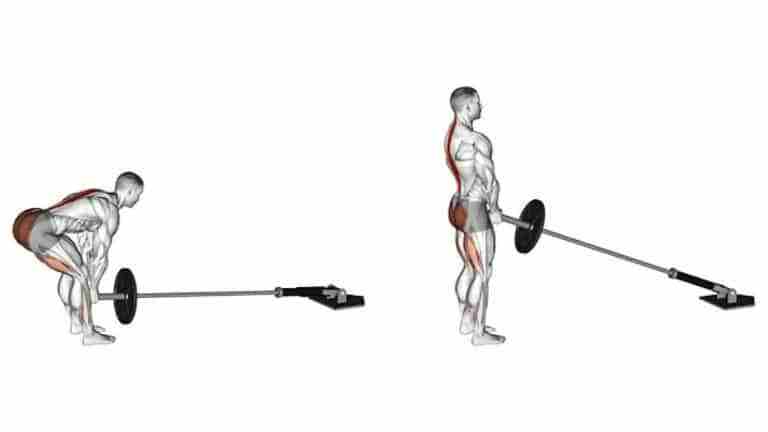
- Landmine deadlifts use a barbell anchored at one end to target the glutes and add variety to your routine.
- How to Perform: Stand facing the anchored end of the barbell, grip the other end, and lift by hinging at the hips and extending your hips and knees.
- Tips: Maintain a stable grip, brace your core, and focus on hip extension for maximal glute engagement.
7. Bulgarian Deadlift
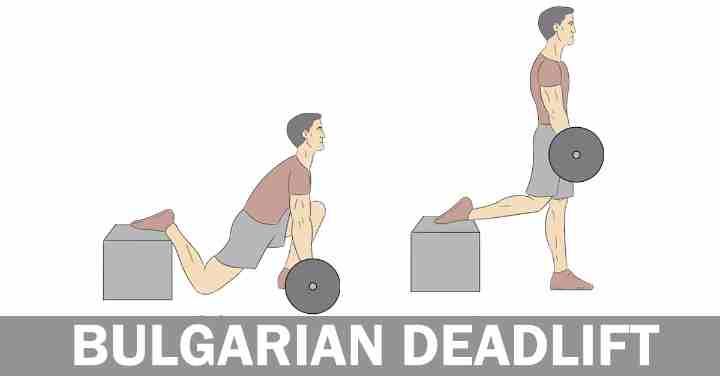
- Bulgarian deadlifts involve a split stance, emphasizing one leg at a time.
- How to Perform: Stand in a staggered stance, with one foot on a bench or platform behind you, and lift as in a standard deadlift.
- Tips: Keep the front knee tracking over the ankle, maintain balance, and switch legs for balanced development.
8. Split Stance Romanian Deadlift
- This variation combines the benefits of the Romanian deadlift with a split stance for added stability.
- How to Perform: Assume a split stance, hold dumbbells, hinge at the hips, and lower the weights along the front leg.
- Tips: Engage your core, maintain a neutral spine, and focus on the stretch in your glutes and hamstrings.
SHOP FOR THE FOAM ROLLER ON AMAZON
Incorporating these deadlift variations into your workout routine can help you target your glutes from various angles, leading to improved strength, shape, and overall glute development. Remember to start with proper form and gradually increase the weight as you progress.
Mistakes to Avoid
While deadlift variations for glutes can be highly effective, there are common mistakes that individuals often make, which can hinder progress and increase the risk of injury. Here, we’ll highlight some crucial mistakes to avoid:
- Rounding your back. This is the most common mistake, and it can put a lot of stress on your lower back and lead to injury. To avoid rounding your back, keep your core engaged and your spine in a neutral position throughout the entire lift.
- Not keeping the bar close to your body. This can also put stress on your lower back and make it difficult to recruit your glute muscles. To keep the bar close to your body, focus on driving through your heels and keeping your lats engaged.
- Lifting with your legs only. Deadlifts are a full-body exercise, so it’s important to use your hamstrings, glutes, and back to lift the weight. To engage your glutes more, focus on driving through your heels and squeezing your glutes at the top of the lift.
- Not locking out your knees. Locking out your knees at the top of the lift is important for protecting your knees and getting the most out of the exercise. To lock out your knees, push through your heels and extend your legs fully.
- Using too much weight. It’s important to start with a weight that you can lift with good form. As you get stronger, you can gradually increase the weight.
SHOP FOR THE FITNESS TRACKER ON AMAZON
By avoiding these common mistakes, you can ensure that your deadlift variations for glutes are not only effective but also safe, helping you achieve your fitness goals while minimizing the risk of injury.
Sample Glute-Targeted Deadlift Workout Routine
Incorporating the various deadlift variations into your workout routine can be an effective way to sculpt your glutes while also building overall strength. Below is a sample workout routine that combines these deadlift variations to help you achieve those desired glute gains.
Warm-up (5-10 minutes): Begin with a dynamic warm-up to prepare your muscles and joints for the workout. This can include light jogging, leg swings, hip circles, and bodyweight squats.
Workout:
1. Deficit Deadlift
- Sets: 3
- Repetitions: 8-10
- Instructions: Place a platform or weight plates under your feet to increase the range of motion. Perform deficit deadlifts with a focus on proper form and glute engagement.
2. Tempo Deadlift
- Sets: 4
- Repetitions: 6-8
- Instructions: Perform the deadlift with a slower tempo, such as 4 seconds on the way up and 4 seconds on the way down. This controlled movement enhances muscle engagement, including the glutes.
3. Sumo Deadlift
- Sets: 3
- Repetitions: 8-10
- Instructions: Adopt a wide stance and grip the barbell inside your knees. Sumo deadlifts place a unique emphasis on the inner thighs and glutes.
4. Single Leg Deadlift
- Sets: 3 (per leg)
- Repetitions: 10-12
- Instructions: Hold a dumbbell or kettlebell in one hand and perform single-leg deadlifts. This exercise not only targets the glutes but also improves balance and stability.
5. Romanian Deadlift
- Sets: 4
- Repetitions: 8-10
- Instructions: Focus on keeping your back straight and your knees slightly bent. Romanian deadlifts are excellent for isolating the hamstrings and glutes.
6. Landmine Deadlift
- Sets: 3
- Repetitions: 10-12
- Instructions: Secure a barbell in a landmine attachment or corner. Perform landmine deadlifts to engage your glutes while minimizing lower back strain.
7. Bulgarian Deadlift
- Sets: 3 (per leg)
- Repetitions: 8-10
- Instructions: Use a bench or a platform to elevate one foot behind you while holding dumbbells. Bulgarian deadlifts are an excellent unilateral exercise for the glutes.
8. Split Stance Romanian Deadlift
- Sets: 3 (per leg)
- Repetitions: 10-12
- Instructions: Assume a split stance and perform Romanian deadlifts in this position. This exercise enhances glute engagement and stability.
Cool-down (5-10 minutes): Finish your workout with static stretches for the legs and glutes. Focus on deep stretches for optimal recovery.
SHOP FOR THE PROTEIN POWDER ON AMAZON
Remember to start with a weight that challenges you but allows you to maintain proper form. As you progress, gradually increase the weight and intensity of your deadlift variations.
FAQs
Q1: Can deadlifts help me get a bigger butt?
Ans. Yes, deadlifts, especially deadlift variations that target the glutes, can help you develop a shapelier and stronger butt. These exercises activate the glute muscles and promote muscle growth when performed correctly.
Q2: How often should I include deadlift variations in my workout routine?
Ans. The frequency of deadlift variations in your routine depends on your fitness level and goals. Generally, 2-3 times a week is a good starting point for most individuals. Ensure adequate rest between sessions to allow for muscle recovery.
Q3: Are deadlifts safe for beginners?
Ans. Deadlifts can be safe for beginners if they start with proper form and appropriate weights. It’s essential to master the basic deadlift technique before moving on to variations. Consider working with a certified trainer for guidance.
Q4: What’s the difference between a sumo deadlift and a conventional deadlift?
Ans. The primary difference is in the stance and hand placement. Sumo deadlifts use a wide stance with hands inside the knees, while conventional deadlifts have a narrower stance with hands outside the knees. Sumo deadlifts place more emphasis on the inner thighs and glutes.
Q5: Can deadlifts help with lower back pain?
Ans. When performed correctly, deadlifts can actually help strengthen the lower back and reduce the risk of lower back pain. However, it’s crucial to prioritize proper form and consult with a healthcare professional if you have pre-existing back issues.
Q6: Do I need special equipment for deadlift variations?
Ans. For most deadlift variations, you’ll need a barbell and weight plates. Some variations, like the trap bar deadlift, require access to specific equipment. Proper footwear with a flat sole is also essential for stability.
Q7: How can I progress in deadlift variations as I get stronger?
Ans. To progress, gradually increase the weight you lift, but always prioritize maintaining proper form. You can also adjust the number of sets and repetitions or incorporate advanced variations as you advance in your training.
Q8: Can I include deadlift variations in a home workout routine?
Ans. Yes, you can perform many deadlift variations with basic equipment like dumbbells or kettlebells, making them suitable for home workouts. Ensure you have enough space and a solid surface to perform the exercises safely.
Conclusion
Incorporating deadlift variations into your fitness regimen can be a game-changer for achieving those coveted glute gains. By understanding the importance of glutes, mastering proper form, and selecting the right deadlift variations, you’ll be well on your way to sculpting stronger and more defined glutes. Remember to consult with a fitness professional if you’re new to deadlifts and always prioritize safety and form.

Good day, and welcome to Fitthour. My name is Shubham Vijay, and I am a certified personal trainer and nutrition coach with 6 years of experience in the fitness industry. At Fitthour, we specialize in types of training, such as strength training, cardio, or HIIT, and our mission is to help clients achieve their fitness goals and improve their overall health.



